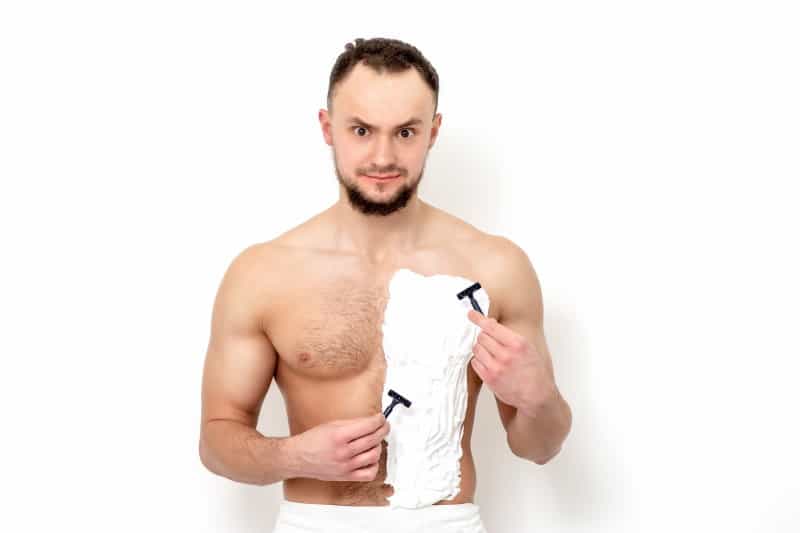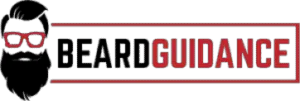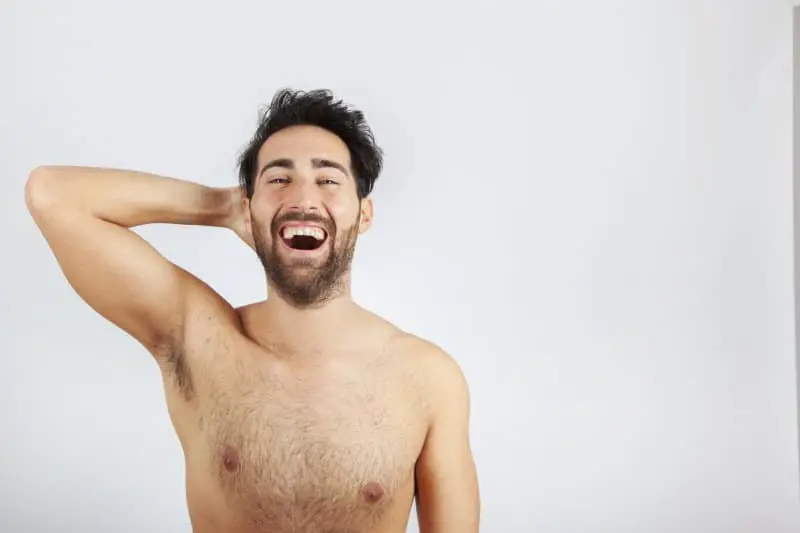More and more, men are turning to minoxidil products like Rogaine and Hims to fill out and thicken their beards. These medicines are marketed primarily for hair-loss prevention, but there is growing evidence that they can aid facial hair growth as well. This raises a concern, though: if minoxidil can produce hair growth beyond the scalp, will it also lead to increased chest hair growth?
One of the stated side effects of minoxidil is body hair growth. This is particularly true for oral medication. For topical creams and foams, the risk of increased chest hair is minimal, especially if you avoid transferring the medicine to your body during application.
To get a better sense of how minoxidil will affect your chest hair, it’s important to understand how it interacts with your body. This will assist you in determining whether you want to use these products for beard growth.
How Minoxidil Works
Minoxidil’s original purpose was as a blood pressure medication. For the better part of two decades, this was its sole usage. However, patients using the drug began reporting increased hair growth as a side effect.
Consequently, this compound was re-patented as a hair growth agent and marketed under the name Rogaine in the late 1980s.
The reason for minoxidil’s effectiveness in growing hair is that – like most blood pressure medicines – it dilates the blood vessels in the body. This increases blood flow, which in turn delivers more nutrients to hair follicles. When you swallow a minoxidil tablet or massage it into your face, you are widening the vessels to provide more sustenance to your hair.
With this in mind, it isn’t hard to imagine how these medicines could end up stimulating hair growth in other parts of the body. Certainly, beardsmen are finding success with minoxidil for the off-label goal of promoting facial hair growth. So, what about chest hair?
By digging into the different minoxidil products on the market and how each type affects the body, we can shed light on your likelihood of developing a bushier pelt on your pecs.
The Difference Between Topical and Oral Products
Products containing minoxidil generally come in two forms. Over-the-counter medicines come as topical products like gels, creams, and foams. Prescription minoxidil, however, normally comes in the form of an oral tablet.
Many patients prefer oral medication because it does not require them to apply anything to the skin, where it might be noticeable to friends and coworkers. Doctors favor oral minoxidil as well. It’s easier to manage patient dosage with a pill.
On the other hand, topical minoxidil tends to be faster-acting than its oral counterpart. This also means that its side effects normally appear more quickly.
In the end, which type of medication a person uses probably depends on practical factors. For doctors, the choice might come down to whether the patient reacts better to the oral or topical treatment. For patients – and particularly men looking to use minoxidil to stimulate beard growth – the ease of purchasing an over-the-counter topical product will determine their choice.
There are a fair number of topical minoxidil products available for purchase online, and many have positive reviews, but we suggest you check out Men’s Rogaine 5% Minoxidil Foam for Hair Loss and Hair Regrowth, Topical Treatment for Thinning Hair. Rogaine has been the main player in minoxidil since it hit the market for hair growth in the 1980s. As such, their products are extensively tested and retested, thereby assuring a very high level of performance.
We specifically recommend the Rogaine 5% Minoxidil foam because it allows for easy, clean application. It dries quickly and has a pleasant aroma that will not overpower.
The company has a robust customer service operation, too. This gives you a valuable resource on questions of dosage, shelf life, and side effects.
Body Hair as a Side Effect
One of the acknowledged side effects of minoxidil is increased hair growth on the face and body. On the face, this growth is not limited to the beard area. It can also affect the temples and eyebrows.
Hair growth on the body is most common on the shoulders and arms, but the chest can also be affected. Perhaps unsurprisingly, much discussion of these side effects focuses on women who use minoxidil. Extraneous body and facial hair growth is more quickly noticeable with women, and it’s more likely to dissuade women from continuing with the drug.
It’s worth noting, however, that hair shedding is also a possible side effect of the drug. This reflects something frustrating about minoxidil: researchers are not totally confident explaining how it affects the body. Indeed, even the way it promotes hair growth is somewhat opaque, and its efficacy in growing fuller beards is only now being tested.
All this is to say, there’s a lot of variance with how patients respond to the drug. Your experience may involve no chest hair growth, a huge amount, or something in the middle.
Factors Contributing to Increased Body Hair
The only clear factor to determine whether you might experience chest hair growth as a result of minoxidil is whether you’re taking it topically or orally.
Only oral minoxidil has shown substantial examples of body hair growth as a side effect. This is unsurprising since an oral medication will almost certainly have a more general effect on the body than a locally applied ointment.
Bear in mind, though, that if you are using topical minoxidil, you should be careful to keep it away from areas of your body where you don’t want to promote hair growth. While a tuft of hair will not immediately spring up wherever you spread the product, you should be mindful about avoiding unintended exposure.
Addressing Increased Chest Hair

If you notice unexpected chest hair as you take minoxidil, you have several options for addressing it.
You might determine that this is a worthwhile trade-off for the results you’re seeing with your beard. Indeed, many people find a robust chest of hair to be quite attractive. It can denote maturity, ruggedness, and virility. A good thicket of chest hair might be a solid complement to your full, luxurious facial hair.
Still, a lot of guys don’t like a hairy torso. Others may have a partner who isn’t a fan. In these circumstances, you have a few options. Obviously, you could discontinue your use of minoxidil, which would end the side effect of chest hair growth.
If you want to continue with the beard growth regimen that minoxidil provides, then you will have to add chest hair removal to your self-care routine. You can shave off the hair in the comfort of your home. Alternatively, a longer-term solution would be having a professional remove your newly-acquired chest-mane via electrolysis or waxing.
The Bottom Line
Every day, more and more beardsmen are making use of minoxidil to improve beard growth and fill in bald patches in their facial hair. Most evidence points to this compound being effective with beard growth.
However, minoxidil’s side effects remain somewhat mysterious. Particularly in its oral incarnation, this drug can have the unintended consequence of producing new chest hair. With all these factors listed above in mind, you can make an informed decision about your beard-growth regimen. Minoxidil might still be the best hair product out there for you.
We have plenty of other coverage of minoxidil and other beard growth solutions in prior articles. Check them out for even more quality info!

